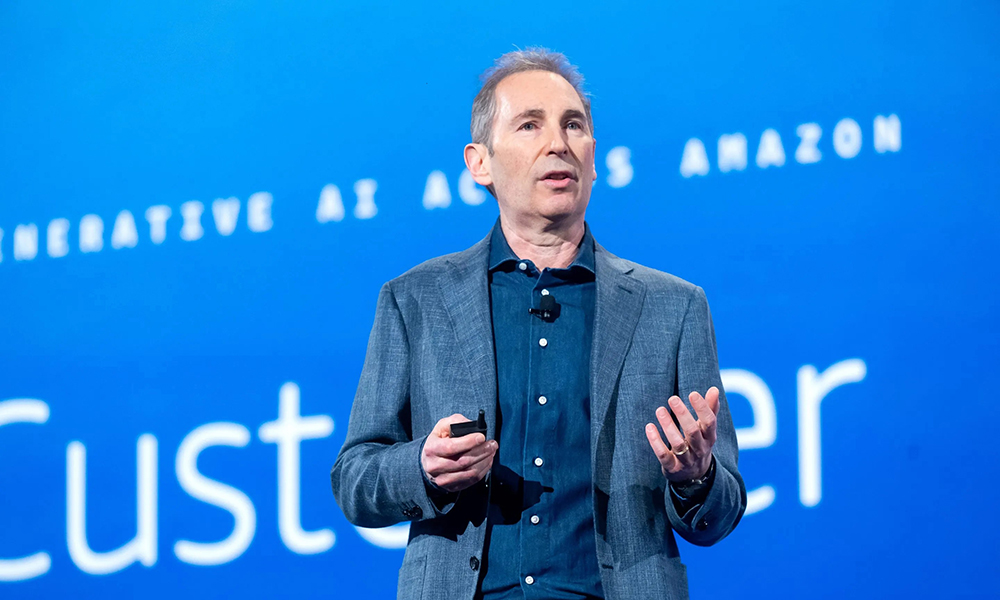
5月21日举行的亚马逊年度股东大会毫无惊喜。期间,股东们提出提案,要求公司加大对业务运营及其影响的监督,并提升其透明度,但均遭到了投资者的再次否决。
不过,这场时长约一小时的会议确实让亚马逊首席执行官安迪・贾西有机会再次解释,为什么公司会在人工智能基础设施和产品方面投入大量资金,而且投资呈现出快速增长之势——该公司主要聚焦于这一领域的资本支出将从去年的780亿美元增至2025年的约1000亿美元。
贾西称当前的生成式人工智能环境是一个“非常难得的机会”。在开场致辞中,以及在回答一位股东提出的“是否如富国银行近期报告披露的那样,亚马逊正在放缓对人工智能的投资”这一问题时,他列举了近12个亚马逊内部使用该技术的具体案例。(贾西否认了投资放缓的说法。)
这位首席执行官列举了生成式人工智能在两个领域的应用:“成本规避与生产力”以及 “全新的客户体验”。
在第一个领域,他提到了公司的核心聊天机器人客服(已使用生成式人工智能进行了重新设计),以及帮助亚马逊卖家加快新商品列表创建速度的生成式人工智能工具,还有帮助公司更准确预测客户库存需求的工具。
在第二个领域,贾西简要介绍了一系列面向客户的产品,从Rufus购物助手到新的Alexa Plus语音助手(该公司上个月开始向有限的客户群体推出这款语音助手,不过目前很难找到这些新用户)。这位首席执行官还提到了亚马逊购物应用程序中人工智能客户评论摘要,以及面向AWS客户的新产品,例如Nova基础模型和该公司的Trainium人工智能芯片。
贾西表示:“我们恰恰认为,人工智能将重塑几乎所有的客户体验”。他指出,那些本着长远眼光来看待这一转型的股东最终会 “非常高兴”。
在贾西发表上述言论之前,他和其他大型科技公司竞争对手的首席执行官仍在解释和辩解,他们为什么自ChatGPT问世之后两年多以来一直在投巨资开发生成式人工智能消费技术和基础设施。在公开市场的投资者看来,这个很多人眼中的历史性商业机遇确实有其潜力,但这场军备竞赛亦在消耗着不菲的资源,因此每当财报公布之时,人们便经常会听到这种解释或辩解。
对于像贾西这样的首席执行官来说,这些解释不仅是用来安抚、教育投资者或激发他们的兴趣,同时也可以被看作是一种信号,旨在帮助他们吸引梦寐以求的专业人才。(财富中文网)
译者:冯丰
审校:夏林
5月21日举行的亚马逊年度股东大会毫无惊喜。期间,股东们提出提案,要求公司加大对业务运营及其影响的监督,并提升其透明度,但均遭到了投资者的再次否决。
不过,这场时长约一小时的会议确实让亚马逊首席执行官安迪・贾西有机会再次解释,为什么公司会在人工智能基础设施和产品方面投入大量资金,而且投资呈现出快速增长之势——该公司主要聚焦于这一领域的资本支出将从去年的780亿美元增至2025年的约1000亿美元。
贾西称当前的生成式人工智能环境是一个“非常难得的机会”。在开场致辞中,以及在回答一位股东提出的“是否如富国银行近期报告披露的那样,亚马逊正在放缓对人工智能的投资”这一问题时,他列举了近12个亚马逊内部使用该技术的具体案例。(贾西否认了投资放缓的说法。)
这位首席执行官列举了生成式人工智能在两个领域的应用:“成本规避与生产力”以及 “全新的客户体验”。
在第一个领域,他提到了公司的核心聊天机器人客服(已使用生成式人工智能进行了重新设计),以及帮助亚马逊卖家加快新商品列表创建速度的生成式人工智能工具,还有帮助公司更准确预测客户库存需求的工具。
在第二个领域,贾西简要介绍了一系列面向客户的产品,从Rufus购物助手到新的Alexa Plus语音助手(该公司上个月开始向有限的客户群体推出这款语音助手,不过目前很难找到这些新用户)。这位首席执行官还提到了亚马逊购物应用程序中人工智能客户评论摘要,以及面向AWS客户的新产品,例如Nova基础模型和该公司的Trainium人工智能芯片。
贾西表示:“我们恰恰认为,人工智能将重塑几乎所有的客户体验”。他指出,那些本着长远眼光来看待这一转型的股东最终会 “非常高兴”。
在贾西发表上述言论之前,他和其他大型科技公司竞争对手的首席执行官仍在解释和辩解,他们为什么自ChatGPT问世之后两年多以来一直在投巨资开发生成式人工智能消费技术和基础设施。在公开市场的投资者看来,这个很多人眼中的历史性商业机遇确实有其潜力,但这场军备竞赛亦在消耗着不菲的资源,因此每当财报公布之时,人们便经常会听到这种解释或辩解。
对于像贾西这样的首席执行官来说,这些解释不仅是用来安抚、教育投资者或激发他们的兴趣,同时也可以被看作是一种信号,旨在帮助他们吸引梦寐以求的专业人才。(财富中文网)
译者:冯丰
审校:夏林
Amazon’s annual shareholder meeting featured no surprises on Wednesday, as investors again rejected all proposals from their peers for the company to provide additional oversight and transparency on their business operations and impact.
But the approximately hour-long meeting did provide a venue for Amazon CEO Andy Jassy to once again made the case for the company’s extraordinary—and fast-growing—investments into artificial intelligence infrastructure and products, with capital expenditures primarily focused on this space to grow to around $100 billion in 2025, up from $78 billion last year.
Calling the current gen AI environment a “very unusual opportunity,” Jassy rattled off nearly a dozen different tangible use cases of the technology inside Amazon, across both his opening remarks as well as in response to a question from a shareholder that asked if Amazon was slowing down its AI investments as some thought a recent Wells Fargo report was indicating. (Jassy denied a slowdown).
The CEO cited gen AI uses across two realms: “cost avoidance and productivity” and “altogether new customer experiences.”
In the first bucket, he referenced the company’s core customer service chatbot, that was rearchitected using gen AI, as well as gen AI tools that help Amazon sellers create new listings quicker, as well as ones that help the company forecast customer demand for inventory more accurately.
In the second bucket, Jassy breezed through a bevy of customer-facing products, from the Rufus shopping assistant, to the new Alexa Plus voice assistant, which the company began rolling out to a limited customer base last month (though these new users are currently hard to find). The CEO also pointed to AI-powered customer review summaries on Amazon’s shopping app, and new products geared toward AWS customers like the Nova foundational model and the company’s Trainium AI chips.
“We happen to believe that virtually every customer experience will be reinvented using AI,” Jassy said. He said that shareholders who see this transformation through over the long term will end up “very happy.”
Jassy’s comments come as he and other rival Big Tech CEOs continue to explain and defend their unprecedented investments into generative AI consumer technologies and infrastructure since ChatGPT burst onto the scene more than two years ago. Such explanations or defenses have become regular occurrences on earnings reports as public-market investors try to balance the potential of what many see as a historic business opportunity with the exceptional resources being poured into this arms race.
For CEOs like Jassy, the explanations not only are designed to appease, educate or excite investors, but also could be seen as signals meant to help attract specialized and coveted talent.






